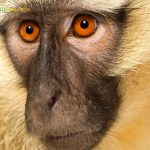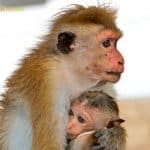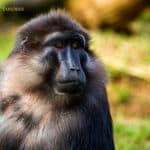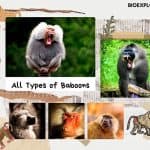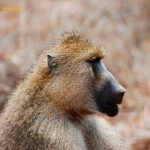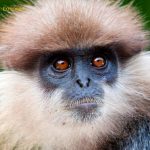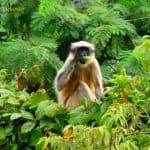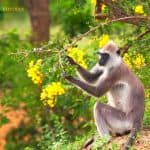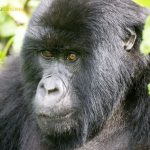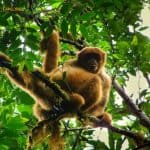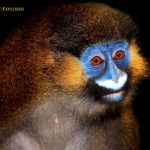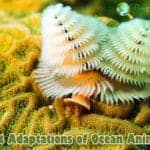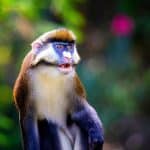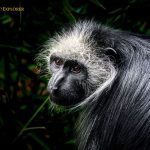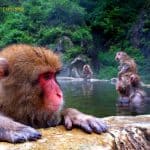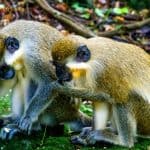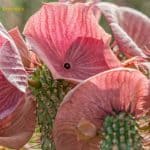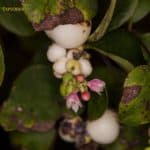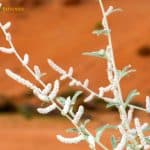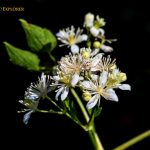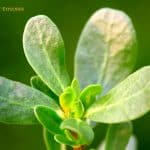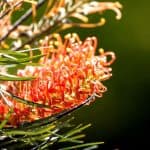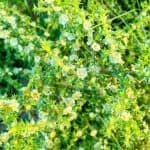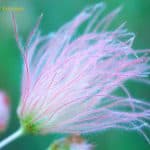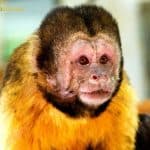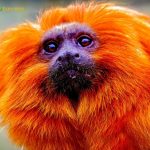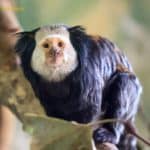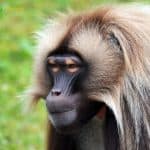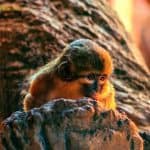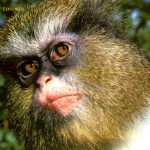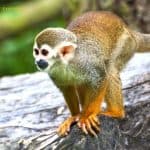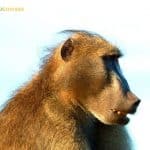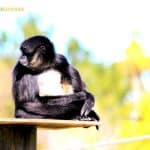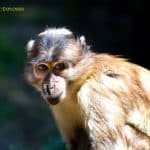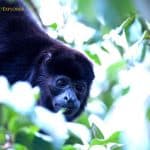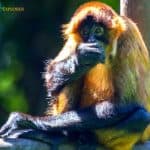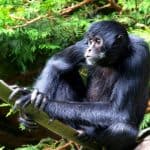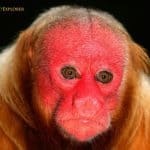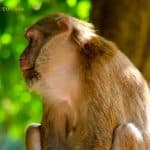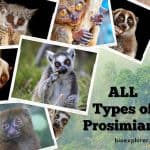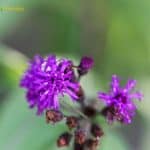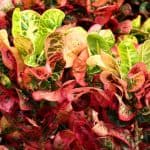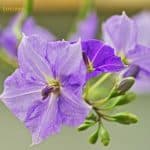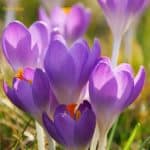the red flower - search results
If you're not happy with the results, please do another search
Colobus Monkeys
Colobus monkeys are Old world monkeys of the genus Colobus endemic to Africa. Several of the Colobus monkey species are Red Colobus monkeys.
Tana River Mangabey
Tana River Mangabeys are medium-sized monkeys with long, light gray hair covering most of their bodies. Tana River Mangabeys are highly social animals, living in multi-female social groups averaging 27 individuals in size.
Saban Grizzled Langur
Saban Grizzled Langur was once thought to be a subspecies of the Hose's langur, Presbytis hosei (as Presbytis hosei sabana). The Saban grizzled langur is endemic to the island of Borneo in the Malaysian province of Sabah, with part of its range in Indonesia.
Black Sumatran Langur
The black Sumatran langur is a species of monkey in the Cercopithecidae family that is endemic to Indonesia's Sumatra Island. Presbytis sumatrana was once considered a subspecies of Sumatran Surili. Still, genetic analysis has shown it to be a distinct species.
Vervet Monkey
The vervet monkey (Chlorocebus pygerythrus) is an Old World monkey of the Cercopithecidae family endemic to southern and eastern Africa. Not only can vervet monkeys skilfully navigate through the treetops, but they can also swim.
Toque Macaque
The toque macaque (Macaca sinica) is a red-brown Old World monkey endemic to Sri Lanka, known as the rilewa or rilawa. Its common name refers to the strand of hair on its head that resembles a brimless hat.
Tonkean Macaque
Tonkean macaques also known as Tonkean black macaques, are endemic to the central part of the island of Sulawesi and the neighboring Togian Islands in Indonesia. Tonkea macaques are pretty intelligent and creative.
Baboons
Baboons are another breed of Old-world monkeys classified under the genus Papio. There are 6 types of baboons. Explore all about baboons here.
Yellow Baboon
The yellow baboon (Papio cynocephalus) is another baboon species in the group of Old World monkeys. They resemble the Chacma baboon but are slightly smaller and have a less elongated snout. Yellow baboons also have white fur on internal surfaces, such as their cheeks and limbs, similar to the color of the human forearm.
What Do Goldfinches Eat? Explore Goldfinch Diets, Hunting & Eating Habits
Goldfinches are mainly omnivores. Explore in detail what do Goldfinches eat by their types, hunting techniques, what eats Goldfinches & more.
Langurs
Langurs are Old-world monkeys classified under the Colobinae family along with other leaf-eating monkeys, including Colobus and proboscis monkeys. Explore langur characteristics and all types of langur species here.
Purple-faced Langur
The purple-faced langur (Semnopithecus vetulus), also called the purple-faced leaf monkey, is an Old World species native to Sri Lanka. The purple-faced langur is found in the closed forests of Sri Lanka's mountains and in the southwestern part of the country known as the 'wetland'.
Black-footed Gray Langur
The black-footed gray langur is an Old-World monkey, one of the langur species. Like other gray langurs, this species is a leaf-eating monkey in southern India. The black-footed gray langur is distributed throughout southwestern India (Kerala, Karnataka, and Goa) but is concentrated in the Western Ghats.
Tufted Gray Langur
The tufted gray langur (Semnopithecus priam), also called the Coromandel sacred langur and the Madras gray langur, is an Old-World monkey, one of the langur species. These langurs are generally shy and only descend when there is no visible danger.
Eastern Gorilla
The eastern gorilla is an endangered species of the Gorilla genus and the largest living primate, with an average length of 150 cm for females and 185 cm for males. Eastern gorillas live in stable and cohesive family groups led by a dominant silverback male.
Common Chimpanzee
The chimpanzee, also known simply as the chimp, is a species of great ape native to the forests and savannas of tropical Africa. Chimpanzees and humans are thought to have a common ancestor that lived about eight million years ago.
Southern Muriqui
The southern muriqui or woolly spider monkeys (Brachyteles arachnoides) are scattered across southeastern Brazil, from Bahia north to Sao Palo south. The southern muriqui is one of the largest primates in South America, with males weighing around 15 kg and females around 12 kg.
Moustached Guenon
The mustached monkey or moustached guenon (Cercopithecus cephus) is a primate species in the Cercopithecidae family. Moustached monkeys take regular paths through the branches, with each monkey following the next along the same path.
Explore 15 Remarkable Adaptations of Ocean Inhabitants
In the realm of flora and fauna, the ocean presents itself as an immense tapestry of diverse habitats. Embark on a journey through the 15 most extraordinary adaptations of ocean creatures.
Lowe’s Mona Monkey
Lowe's Mona monkey (Cercopithecus lowei) is an Old-World monkey in the Cercopithecidae family found from Ghana to the Ivory Coast. Lowe's Mona monkeys generally consist of one male and several females.
Lesser Spotted-Nosed Monkey
The lesser spotted-nosed monkey, lesser spotted monkey, or lesser white-nosed monkey (Cercopithecus petaurista) is a primate species in the Cercopithecidae family. The lesser spotted-nosed monkey is diurnal, arboreal, and cryptic.
King Colobus
The king colobus (Colobus polykomos), also called the western black and white colobus is a species of Old World monkey found in lowland and montane rainforests.
Japanese Macaque
The Japanese macaque (Macaca fuscata), also called the snow monkey, is a terrestrial Old World species of monkeys endemic to Japan. Japanese macaques from southern regions generally weigh less than those in northern regions of higher altitudes, where there is more snow during the winter months.
Humboldt’s White Capuchin
Humboldt's white capuchins, also known as white-fronted capuchins, are a species of New-World monkeys and one of the smallest capuchin groups. Humboldt’s squirrel monkeys are usually led by a dominant male and female.
Guianan Brown Capuchin
The tufted capuchin (Sapajus apella), also called the pin monkey, Guianan brown capuchin, or black-headed capuchin is a New World monkey native to South America and the Caribbean islands of Margarita and Trinidad.
Green Monkey
The green monkey (Chlorocebus sabaeus), also called the sabaeus monkey, is an Old World monkey with golden-green fur, pale feet, and hands. Green monkeys' locomotion varies little, regardless of substrate or habitat. In nearly all circumstances, they move quadrupedally in the treetops or on the ground.
Hoodia Cactus
The Hoodia cactus is a flowering plant of the family Apocynaceae. It has been called one of the 21st century’s wonder plants. Hoodia gordonii shares many similarities with the cactus but does not belong to the cactus family. Instead, the Hoodia cactus belongs to the milkweed family.
Desert Snowberry
Symphoricarpus longiflora is an erect shrub of the Dipsacales family. It is often found in dry habitats. The flowers of the Desert Snowberry are fragrant and tubular. These flowers appear singly or in pairs along the leaf axils.
White Saxaul
White Saxual is a tap-rooted shrub or small tree that belongs to the pigweed family. The stem of the White Saxaul is stout and rugged. It has a height of 4.5-5 meters. The White Saxaul is called "Ghada" and was often mentioned in classical Arabic poetry.
Old-Man’s Beard
Clematis ligusticifolia is woody or semi-woody climber from the Ranunculaceae family. This desert flowering plant can grow up to 20 feet or more. All parts of the plant can cause severe irritation in the mouth if eaten.
Desert Horse Purselane
Triabthena portulacastrum is an annual herb of the family Aizoaceae. The Desert Horse Purselane is succulent and usually glabrous. The Desert Horse Purslane plant has been eaten for at least 2000 years.
Mount Finke Grevillea
Grevillea treueriana is a small shrub from order Proteales. The Mount Finke Grevillea plants are endemic to Mount Finke of Australia and can grow to a height of 2 meters. The flowers of the Grevillea treueriana are shaped like a toothbrush.
Saltwort
Saltwort is an annual herb from the Amaranth family. The flowers of the Saltwort are radially symmetrical and possess 5 tepals fused into a cup or tube. Usually, there is one flower per axil of the bract.
Canaigre Dock
Rumex hymenosepalus is a perennial flowering desert plant belonging to the order Caryophyllales. The inflorescence of the Canaigre Dock is made up of elongated clusters of many small flowers in a reddish pink.
Apache Plume
Apache Plume (Fallugia paradoxa) is a hardy shrub native to the deserts of northern Mexico and the southwestern U.S. It produces simple, white, five-petaled flowers resembling small roses, followed by feathery pink seed plumes that look like a cloud.
Golden-Bellied Capuchin
The golden-bellied capuchin (Sapajus xanthosternos), also called the buff-headed or yellow-breasted capuchin is a New World monkey species. They spend much time grooming one another for socialization, with the alpha species receiving the most attention.
Golden Lion Tamarin
The golden lion tamarin (Leontopithecus rosalia), also called the golden tamarin, is a small New World primate in the Callitrichidae family. The golden lion tamarin derives its name from its vivid reddish-orange coat and extra-long hair around its face and ears, giving it a distinctive mane.
White-Headed Marmoset
The Geoffroy's marmoset, also called Geoffrey's marmoset, white-headed marmoset, or tufted-ear marmoset is a marmoset native to the forests of eastern Brazil, where it is native to Minas Gerais, Espírito Santo, and Bahia. Geoffroy's marmosets are said to follow swarms of army ants to catch insects expelled by the ants.
Gelada
The gelada often called the gelada baboon, or the bleeding-heart monkey, is an Old-World monkey found only in the Ethiopian highlands. Geladas aren't territorial, and it is not unusual to find congregations of separate groups foraging together when conditions are favorable.
Gabon Talapoin
The Gabon talapoin, also called the northern talapoin, is a small species of African primate endemic to riverine habitats in Gabon, Equatorial Guinea, Cameroon, the far western Democratic Republic of the Congo, and the western Republic of the Congo.
Crested Mona Monkey
The crested mona monkey, also called the golden-bellied monkey, golden-bellied guenon, or crowned guenon, is a species of African primate in the Cercopithecidae family in west-central Africa. Like many species of Cercopithecus, the crested mona monkey has large cheek pouches that it fills with seeds and fruit while foraging for food.
Guianan Squirrel Monkey
The Guianan squirrel monkey, also called the South American squirrel monkey, is a squirrel monkey found in Guiana, Brazil, and Venezuela. Saimiri sciureus was once thought to belong to the Collins' squirrel monkey and the Humboldt's squirrel monkey. Still, genetic research in 2009 and 2015 showed they were different species.
Chacma Baboon
Like all other baboons, the Chacma baboon, the Cape baboon, belongs to the Old-World monkey family. Chacma baboons have a habit of flipping over rocks in search of food. So, it's pretty easy to spot where a group of Chacmas once foraged.
White-bellied Spider Monkey
The white-bellied spider monkey (Ateles belzebuth), also called the long-haired or white-fronted spider monkey, is an endangered species of spider monkey, a species of New-World monkey. These arboreal monkeys spend most of their time in the canopy. They rarely go down. When they do, they drink water, eat dirt, traverse a treeless area, or run away from an aggressive opponent.
Sooty Mangabey
The sooty mangabey, also called the white-collared or white-crowned mangabey is a predominantly terrestrial Old-World monkey. Sooty mangabeys remember the location of the fallen fruit and can tell whether or not a tree is bearing fruit.
Mantled Howler Monkey
The Mantled howler monkey (Alouatta palliata) is a species of howler monkey, a New World monkey native to South and Central America. The species gets its name "mantled" from the long, protective hairs on its sides.
Central American Squirrel Monkey
The Central American squirrel monkey also called the red-backed squirrel monkey, is a squirrel monkey type native to the Pacific coast of Panama and Costa Rica. Central American squirrel monkeys spend most of their lives in the middle and upper layers of the tree canopy.
Geoffroy’s Spider Monkey
Geoffroy's spider monkey (Ateles geoffroyi) also called the Central American spider monkey or black-handed spider monkey, is a species of spider monkey. The species name geoffroyi is honored by Étienne Geoffroy Saint-Hilaire, a French naturalist. The Geoffroy's spider monkey consists of five recognized subspecies residing in various parts of Central America and Mexico. These include the Hooded spider monkey (A. g. grisescens) in southern Mexico, the ornately-patterned Ornate spider monkey (A. g. ornatus) in Costa Rica and Panama, the Yucatan spider monkey (A. g. yucatanensis) in the Yucatan Peninsula, the Mexican spider monkey (A. g. vellerosus) in Veracruz, and the nominate Nicaraguan spider monkey subspecies (A. g. geoffroyi) found in Nicaragua, Honduras and northern Costa Rica.
Blue Monkey
The blue monkey is a species of Old-World monkey endemic to east and central Africa, ranging from the upper Congo Basin east to the East African Rift Valley and south to Zambia and northern Angola.
Black Spider Monkey
Ateles paniscus, the black spider monkey, is one of three sub-species of spider monkeys. Aside from the face, feet, and hands, they are covered in jet-black hair longer than a typical primate. Of all the Ateles species, Ateles paniscus is the largest.
Bald Uakari
The obscure Bald Uakari (Cacajao Calvus) is an acrobatic Amazonian monkey with a flaming red face uniquely adapted to periodically flooded forests. Surprising insights on its taxonomy, specialized seed-based diet, unusual social life, habitat flexibility, and urgent need to conserve diminishing flooded forest habitat across the Amazon Basin.
Assam Macaque
The Assam macaque, also known as Assamese macaque, is a macaque of the Old-World monkey family endemic to South and Southeast Asia. Assam is another state in India. Eating everything from fruits to 55 types of flowers, leaves, seeds, and bark, these macaque monkeys adapt their diet to suit their habitat.
Prosimians
Prosimians are a grouping of primates currently made up of the species (both living and extinct) of two main taxonomic categories. Explore all types of prosimians here.
Vernonia
The Vernonia genus includes 350 species of shrubs and forbs in the Asteraceae (sunflower) family. Some species of Vernonia are also known as ironweed. Vernonia plants have small purple flowers gathered in loose clusters, making them popular cut flowers.
Peperomia
Peperomia is one of the two main genera of the Piperaceae family. Most are small, compact perennial epiphytes that grow on rotten wood. Over 1,500 species have been recorded in all subtropical and tropical regions worldwide. Typically, Peperomia flowers appear in brown, yellow, or green conical spikes.
Piper
Piper is an ecologically and economically important genus of the Piperaceae family. It includes around 1,000 to 2,000 species of lianas, herbs, and shrubs, many of which are dominant in their natural habitat. The Piper flowers bloom in early summer. They are slightly purple to white in color and hang in a bell shape.
Croton
Croton (Codiaeum variegatum) is a common houseplant cultivated for its eye-catching foliage. This evergreen plant varies widely in leaf pattern and color, and wide varieties have been developed. The whitish male flowers with 5 small petals and 20-30 star-shaped stamens appear in separate inflorescences as the yellowish female flowers without petals.
Solanum
Solanum is a diverse and large flowering plant genus that includes 3 food crops of great economic importance: eggplant, tomato, and potato. The Solanum genus now contains around 1,500 to 2,000 species of plants. Its flowers are available in white, lavender, and dark purple.
Cyclamen
The Cyclamen genus includes about 23 species of perennial plants in the Primulaceae family. Cyclamen species are endemic to the Mediterranean region and Europe. The flowers of the species are white, lavender-white, or rose pink. Flowering Cyclamen are frost-sensitive hybrids from C. persicum.
Crocus
Crocus is a genus of plants in the Iridaceae (Iris) family that includes 90 species of perennial plants. The colors of Crocus vary widely, with white, yellow, mauve, and lilac predominating. The ensiform, grassy leaf usually has a central white band along the leaf axis. It has an entire leaf margin.






